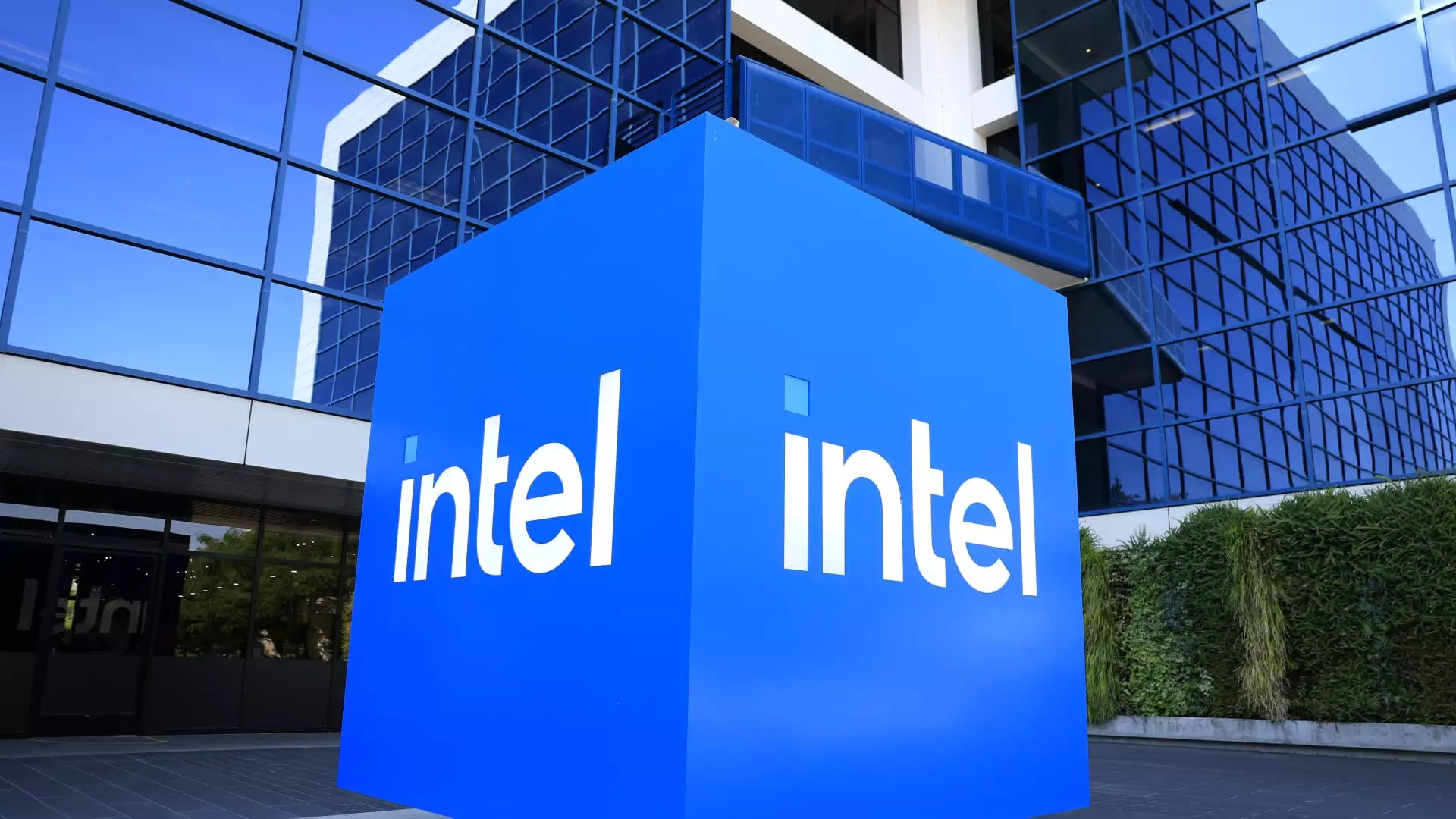In the latest quarter, Intel managed to defy Wall Street’s grim expectations with a revenue figure of $12.86 billion, surpassing estimates by a significant margin. However, beneath this apparent success lies a troubling picture of mounting losses and strategic inconsistency. The company’s net loss of $2.9 billion, or 67 cents per share, underscores a deeper financial malaise that no short-term beat can conceal. While the revenue figures may appear optimistic, they are misleading without acknowledging the broader context of declining profitability and ongoing impairment charges. The $800 million adjustment related to surplus tools with no reutilization signals ineffective capital allocation and a failure to optimize existing assets—a sign that Intel’s operational efficiency remains compromised despite the recent gains.
Looking ahead, Intel’s forecast of $13.1 billion in revenue for the third quarter offers a glimmer of hope but also raises questions about sustainability. The expected break-even in earnings, from analysts’ anticipated 4 cents per share, hints at a company stuck in limbo—struggling to pivot from loss to profit amidst a challenging industry landscape. Such cautious optimism does little to mask the underlying vulnerability in Intel’s financial trajectory, and investors should remain skeptical about whether this recent uptick is sustainable or merely a temporary rally.
Leadership Changes and the Illusion of Reform
The infusion of new leadership under CEO Lip-Bu Tan marked a pivotal moment—a promise to revive Intel’s competitiveness by streamlining operations and cutting costs. Yet, the hastily executed layoffs and restructuring efforts reveal more about a company desperately grasping for stability than genuine strategic resilience. The reduction of 15% of the workforce, predominantly in Oregon and California, and plans to trim expenditures by a staggering $17 billion are moves that could have long-term repercussions on innovation and morale. Demolishing layers of bureaucracy might sound appealing, but such sweeping cuts risk eroding the institutional knowledge and expertise that made Intel a technological leader.
Tan’s admission that “the first few months… have not been easy” signals an uncomfortable recognition of the tremendous challenges facing Intel. However, the focus on cost-cutting over future innovation paints a picture of a company primarily reacting rather than proactively reshaping its destiny. Emphasizing workforce reductions without a clear, strategic roadmap for future technological dominance may ultimately undermine Intel’s ability to compete against nimble rivals like AMD and Nvidia.
Strategic Missteps and a Fragmented Factory Footprint
Intel’s decision to cancel major fab projects in Germany and Poland, combined with plans to consolidate testing and assembly operations in Vietnam and Malaysia, epitomizes a costly retreat driven by market realities. While these cuts may improve near-term financials, they threaten Intel’s long-term position in the global semiconductor ecosystem. The fragmentation of the factory footprint and underutilized facilities are emblematic of past excesses—investments made prematurely without concrete demand, resulting in an inefficient and unresponsive manufacturing network.
The slowdown of Ohio’s cutting-edge chip factory—originally envisioned as a flagship of Intel’s manufacturing prowess—raises serious concerns. The shift to build-out based solely on confirmed customer commitments signifies a more cautious, perhaps even reactive, approach to capital investment. While responsible from a fiscal standpoint, this cautious stance might delay the deployment of breakthrough technologies that could have cemented Intel’s leadership. The industry is moving rapidly, with competitors advancing not just technologically but also strategically; Intel’s hesitant posture risks falling further behind in the innovation race.
Market Share and the Race for Dominance in Data Centers
As Intel’s core client computing segment sees a modest 3% decline, the company’s vulnerability becomes more apparent. Meanwhile, the data center division, which includes high-stakes AI and cloud-processing chips, shows signs of strain as AMD’s increasing foothold pressures Intel’s ambitions. Tan’s explicit desire to recoup market share and his personal oversight over chip designs suggest a leadership trying to patch holes in a rapidly leaking ship. The decision to scrutinize every chip design before mass production, while necessary for quality and innovation, signals a reactive internal process that could delay product launches and reduce agility.
The fight for dominance in data center chips is fierce, and Intel’s current approach might be too little, too late. Without a clear, aggressive strategy that balances cost, innovation, and capacity expansion, the company risks ceding vital market segments to competitors who are more willing to adapt swiftly. Tan’s focus on “economic sense” and cautious building contrasts sharply with the industry’s need for daring, transformative advancements—an attitude that could further entrench Intel’s decline if not balanced with bold vision.
Despite recent stock gains, Intel remains at a crossroads. The company’s latest financials serve as a stark reminder that superficial recovery cannot substitute for genuine strategic overhaul. If Intel continues to prioritize short-term austerity over long-term innovation, it risks becoming an industry relic rather than a formidable leader. The chipmaker’s current trajectory underscores a fundamental truth: resilience in the technology sector depends not just on cutting costs but on cultivating a bold, forward-looking vision—something Intel has yet to fully demonstrate.

